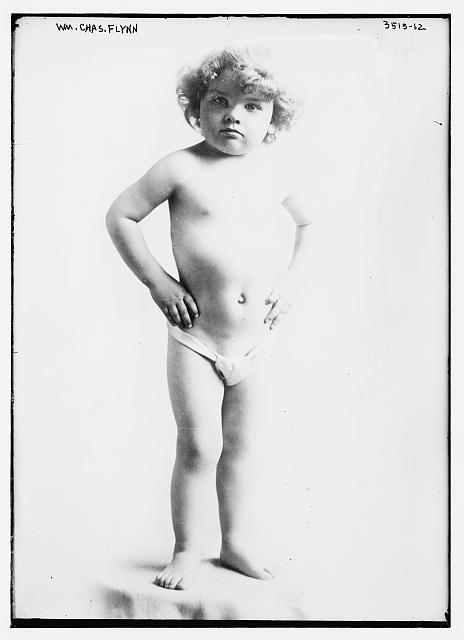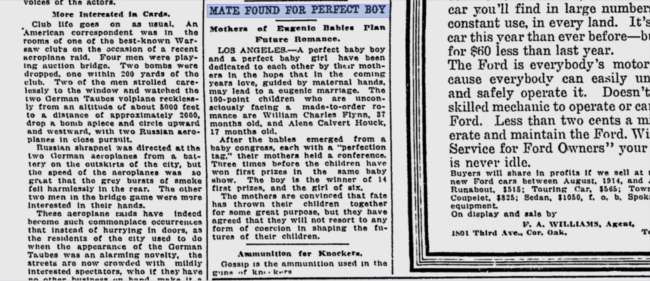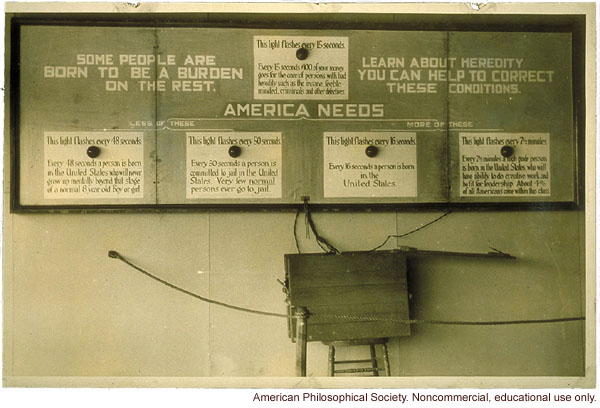William Charles Flynn: Breeding the perfect child through eugenics – 1915

This photograph shows William Charles Flynn, a winner of perfect “eugenic baby” contests in the early 20th Century.
The Spokesman-Review, of Mar 27, 1915, reports that Flynn, 37 months old, had won 14 first prizes in baby eugenics shows. His mother and the mother of 17-months-old Alene Calvert Houck, a girl with 6 wins under her nappy ban, hoped their “perfect 100-point” children would later marry produce the perfect human.

The Eugenics Archive has more:
When one considers the strong contribution of agricultural breeding to the eugenics movement, it is not difficult to see why eugenicists used state fairs as a venue for popular education. A majority of Americans were still living in rural areas during the first several decades of the 20th century, and fairs were major cultural events. Farmers brought their products of selective breeding — fat pigs, speedy horses, and large pumpkins — to the fair to be judged. Why not judge “human stock” to select the most eugenically fit family?
This was exactly the concept behind Fitter Families for Future Firesides — known simply as Fitter Families Contests. The contests were founded by Mary T. Watts and Florence Brown Sherbon — two pioneers of the Baby Health Examination movement, which sprang from a “Better Baby” contest at the 1911 Iowa State Fair and spread to 40 states before World War I. The first Fitter Family Contest was held at the Kansas State Free Fair in 1920. With support from the American Eugenics Society’s Committee on Popular Education, the contests were held at numerous fairs throughout the United States during the 1920s.

At most contests, competitors submitted an “Abridged Record of Family Traits,” and a team of medical doctors performed psychological and physical exams on family members. Each family member was given an overall letter grade of eugenic health, and the family with the highest grade average was awarded a silver trophy. Trophies were typically awarded in three family categories: small (1 child), medium (2-4 children), and large (5 or more children).
All contestants with a B+ or better received bronze medals bearing the inscription, “Yea, I have a goodly heritage.” Childless couples were eligible for prizes in contests held in some states. As expected, the Fitter Families Contest mirrored the eugenics movement itself; winners were invariably White with western and northern European heritage.
Top Ten Unlikely and Surprising Eugenicists
Posted: 13th, February 2021 | In: Key Posts, Strange But True Comment | TrackBack | Permalink


